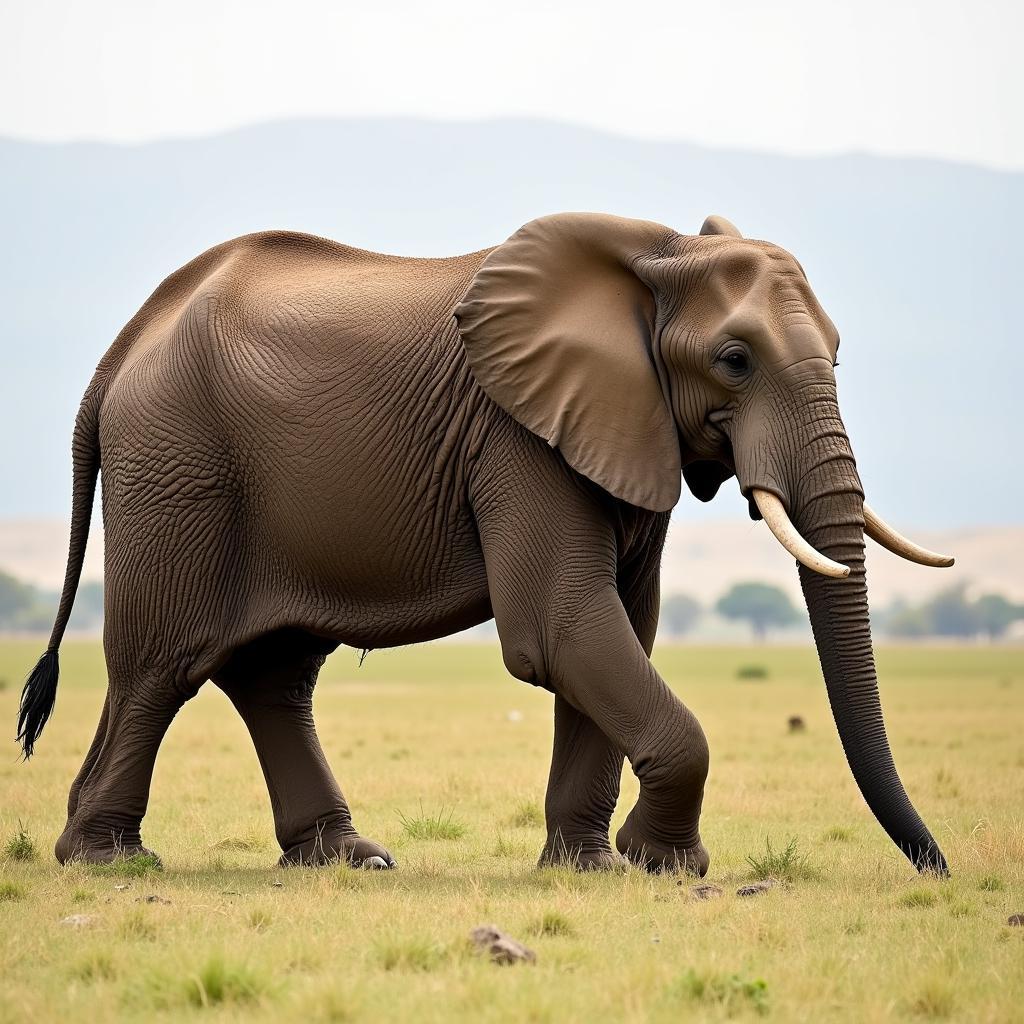African Elephant: A Majestic View from Front and Side
The African elephant, the largest land mammal on Earth, is a sight to behold. Whether viewed from the front, showcasing its imposing tusks and trunk, or from the side, highlighting its massive size and unique body shape, these gentle giants captivate the imagination.
The Iconic Front View: Tusks, Trunk, and Temporal Glands
Standing before an African elephant, one is immediately struck by its sheer size. The average height of an adult male can reach up to 3.3 meters (11 feet) at the shoulder, while females stand slightly shorter. Dominating the front view are its impressive tusks, elongated incisor teeth present in both males and females. These ivory wonders can grow over 3 meters (10 feet) long and weigh over 100 kilograms (220 pounds) each, serving various purposes from digging for water and stripping bark to defense and social displays.
Equally striking is the elephant’s trunk, a remarkable fusion of the nose and upper lip. This prehensile marvel, containing over 40,000 muscles, acts as a multi-purpose tool for breathing, smelling, trumpeting, drinking, and grasping objects with remarkable dexterity. From picking up a single blade of grass to tearing down branches, the trunk exemplifies the elephant’s adaptability and intelligence.
Just behind the eyes, you’ll notice the temporal glands, secreting a pungent fluid during musth, a period of heightened sexual activity in males. This fascinating behavior is a testament to the complex social structure and communication methods employed by these intelligent animals.
The Impressive Side Profile: Size, Shape, and Adaptations
Observing an African elephant from the side provides a different perspective on its grandeur. The sheer size of its body, supported by massive column-like legs, is awe-inspiring. The elephant’s high shoulder and sloping back are unique adaptations, allowing for efficient movement and weight distribution.
The side view also showcases the elephant’s large, fan-shaped ears, crucial for thermoregulation in the African heat. By flapping its ears, the elephant can radiate heat away from its body, keeping cool in scorching temperatures.
 African Elephant Side Profile
African Elephant Side Profile
Examining the elephant’s feet from the side reveals another fascinating adaptation. Beneath its thick, leathery skin lies a unique bone structure and a cushion-like pad, allowing the elephant to tread silently and absorb shock, despite its immense weight.
Appreciating the African Elephant
Whether viewed from the front, showcasing its formidable tusks and versatile trunk, or from the side, highlighting its massive size and unique adaptations, the African elephant is a marvel of the natural world. Understanding its physical characteristics enhances our appreciation for these gentle giants and emphasizes the need for their conservation in the face of poaching and habitat loss.
FAQs about African Elephants
1. What is the difference between African forest elephants and African bush elephants?
While both are classified as African elephants, they differ in size, ear shape, and tusk structure. Forest elephants are smaller, with rounder ears and straighter tusks, while bush elephants are larger, with larger ears and more curved tusks.
2. How intelligent are African elephants?
African elephants are highly intelligent animals, exhibiting complex social structures, problem-solving abilities, and even signs of grief and empathy.
3. How long do African elephants live?
In the wild, African elephants have an average lifespan of 60-70 years.
Explore More About African Wildlife
Want to learn more about the incredible wildlife of Africa? Check out these related articles:
For any inquiries or assistance, please contact us at:
- Phone Number: +255768904061
- Email: kaka.mag@gmail.com
- Address: Mbarali DC Mawindi, Kangaga, Tanzania
Our customer service team is available 24/7 to assist you.


